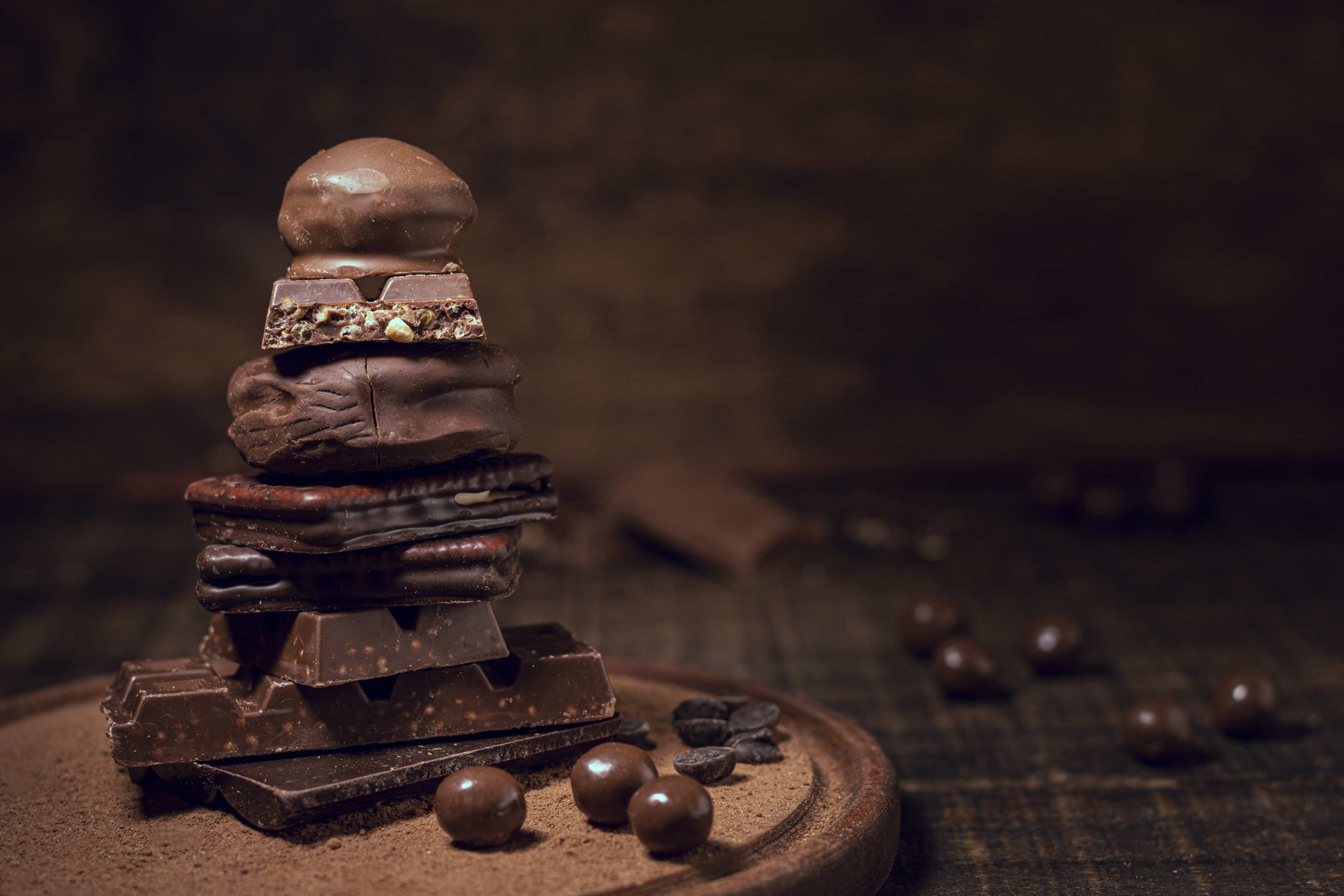



The inclusion of methylxanthines’ contents in food package labels and food composition tables is an important step to increase people´s awareness of methylxanthines existence in certain types of foods. These results suggest that foods and beverages other than coffee can increase importantly the daily intake of stimulant substances and reveals a large variation in the contents of caffeine in coffee and tea beverages, which is often unknown by the general population. Mean contents in cola soft drinks and energy drinks were 8.3 ± 1.2 and 35 ± 1 mg/100 g, respectively. Among teas, black tea (bulk) and green maté (“chimarrão”) presented the highest caffeine contents (23 ± 8 and 22 ± 3 mg/100 g, respectively). Regarding beverages, soluble coffees presented the highest content of caffeine (269 ± 12 mg/100 g), followed by espresso coffees (196 ± 37 mg/100 g) and by coffees prepared by electric dripper (120 ± 19 mg/100 g). Nevertheless, dark chocolate presented the highest mean contents of theobromine (1036 ± 136 mg/100 g) and theophylline (7.8 ± 2.1 mg/100 g). Among solid foods, soluble coffee powders showed the highest mean content of caffeine (2506 ± 477 mg/100 g), while chocolate powders showed the lowest (25 ± 6 mg/100 g). This work investigated the contents of methylxanthines in 25 types of stimulating foods available in the Brazilian market, totaling 199 samples, from which 264 coffee, tea, and chocolate beverages were made using the most common preparation methods in the country. When nutrition and health promotion are of concern, dark chocolates would be recommended over milk and white chocolates owing to their higher contents of antioxidant phenolic compounds. A high correlation (r= 0.93) between total phenolic and flavonoid contents, indicating that the major phenolic compounds in dark chocolates belong to the flavonoid class. Theobromine was detected in dark and milk chocolates, but not in white chocolates. Catechin and epicatechin were major flavonoids detected in dark chocolates. Dark chocolates exhibited the highest phenolics and flavonoids contents, followed by milk and white chocolates. Total phenolic and flavonoids were determined by means of a spectrometric assay, while catechin, epicatechin and theobromine were quantified using a reverse-phase HPLC method. The objective of this study was to determine phenolic and theobromine contents in dark (DC), milk (MC), and white (WC) chocolates commonly found in the Malaysian marketplace. We believe that theobromine can be used as an ingredient of dentifrices and even if swallowed accidentally, there are no adverse effects.Ĭhocolate contains a wide range of antioxidants that includes soluble phenolic compounds (phenolic acids, catechin, epicatechin, and proanthocyanidins), insoluble polymeric phenolics and methylxanthines. Based upon our comparative study between fluoride and theobromine, theobromine is a better alternative than fluoride. It is also well documented that young children who brush their teeth often ingest fluoride-containing dentifrices. The use of fluoride dentifrices is controversial. The ingestion of theobromine by lactating dams showed a decreased release of calcium and phosphorus ions from the enamel surface in the developing teeth of neonates in vivo. In contrast, theobromine (3,7-dimethylxanthine), which is similar to caffeine, caused formation of larger HAP crystallites in vitro.

Furthermore, animal study confirmed the hypothesis that smaller HAP crystallites caused the increased incidence of dental caries. This resulted in the increased release of calcium and phosphorus ions from the enamel surface when exposed to acidic solutions in vitro. Ingestion of caffeine (1,3,7-trimethylxanthine) caused the formation of smaller crystallites of HAP in the developing teeth. During the process of studying caffeine's effects on developing teeth, a serendipitous discovery was made.


 0 kommentar(er)
0 kommentar(er)
